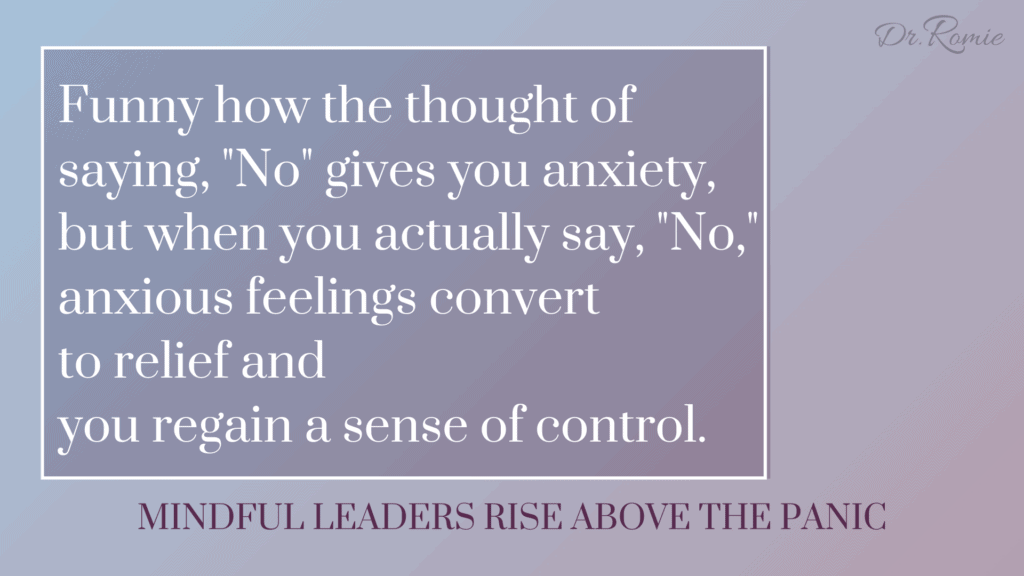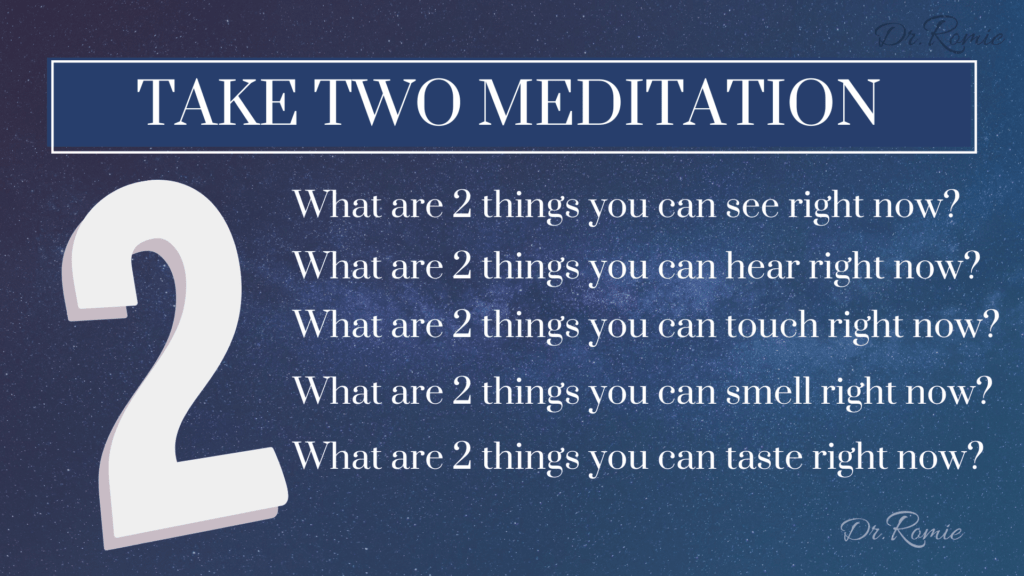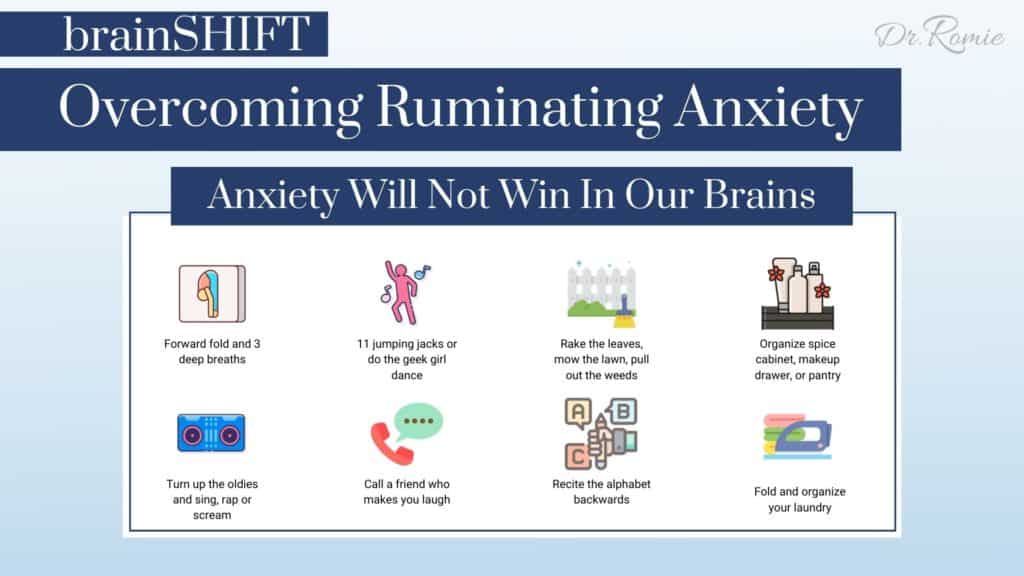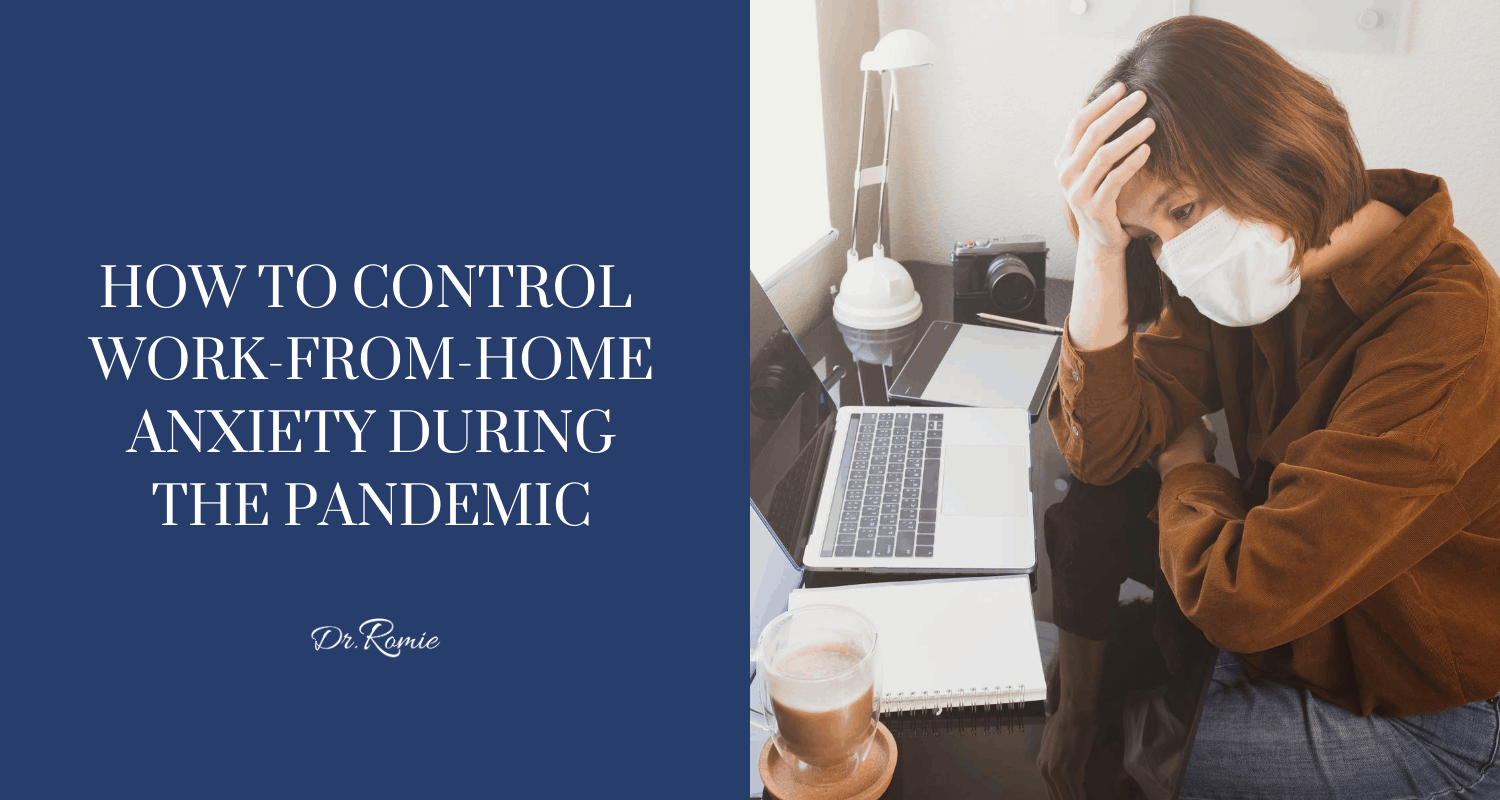Since the start of the work-from-home (WFH) era, we have presented over 50 virtual workshops training employees on “Rise Above the Panic.” The number one question we receive about people working from home, why am I anxious? How can I stop feeling anxious right now?
First and foremost, it is essential to ask these two questions about your feelings of anxiety? As a brain doctor, my concern centers around whether your anxiousness is a temporary feeling or is your anxiety constant?
- What caused me to feel anxious at this moment, did something trigger my anxious feelings?
- Did this feeling of anxiety start unprovoked? Is it constant, regardless of my surroundings?
I want to help decipher the difference between anxious feelings and an actual anxiety disorder. Feelings of worry, anxiousness, lack of control are a normal part of the day. Normal mental health means that we can experience the full range of emotions in a single day or a single hour. At this moment, you can be full of emotions- calm about an aspect of one part of your life, and anxious or worried about another aspect of your life.
Why is Anxiety My ‘New Normal’?
Anxious? You are not alone. It is the number one complaint I hear from professionals in my workshops, social media, and emails. Between working from home or being an essential front-line worker during a pandemic, we all have disruption to our sense of routine. The mind craves a regular schedule, or we become mentally exhausted processing microdecisions necessary to juggle distance learning, noise from social media, the news, and changes at work.
Just when you feel like you have reached your “new normal,” you are forced to change and adapt yet again. By overcoming anxiety and the need to feel in control, we can accept what I call a “now normal ” mentality.
What Triggered Your Anxious Feelings?
Funny how the thought of saying, “no,” makes you feel anxious, but when you actually say, “No!” the anxiety converts to a feeling of calm and regaining control. What is one thing you can say “no” to right now? Did that make your stomach flip or make you want to scroll on by? Pause, girl. The thought of having to say no fuels anxiety, especially when we do not have a clear sense of our personal and mental boundaries. We then start a wheel of assumptions in our mind, “what if I offend someone, what if I lose that friend, what if…..”

EXERCISE: Who or what is adding to your anxiety today?
Say hello to fear masquerading as anxiety. In my “Mindful Leaders Rise Above the Panic” workshop, we talk about fear- false evidence appearing real.
So I invite you to ratchet down your levels of anxiety today.
- What is one “small favor” you can decline doing for someone else today?
- What is one phone or conference call you can move off your schedule this week?
- Is there a toxic group text you’d like to exit?
All you have to do is say, “no, thank you.” No further explanation is needed.
Funny how, when you say no, a boundary gets set. Your mind starts to feel in control of one aspect of your life. Noww you are on the path to regaining a sense of calm in your mind.
EXERCISE: Mindful Minute to brainSHIFT Anxiety
I welcome you to this two-minute meditation practice I use for myself and clients:
- Take a deep breath, remove your gaze from digital devices.
- Name two things you can see with your eyes- and focus on the images, colors, size.
- Breathe and focus on two things you can hear with your ears- notice the sounds, the volume/tone.
- Breathe and focus on two things you can touch with your hands, what is the texture?
- Breathe and focus on two things that you can smell and taste. Notice the aroma.

When we focus all of our senses away from digital devices or stressors- we refocus our minds. Take these two minutes to reset to a sense of calm, and then ask yourself, “what is one thing that I can control right now?”
If you want to #brainSHIFT, I am extending a hand to you to rise out of the mudslinging. I keep it real, so no fluff, fake smiles, rainbows or unicorns from your homie Dr. Romie.
- What is one task you can focus on right now that you have control over? Make your bed, fold your laundry, take your dog for a walk. Allow your mind to feel accomplished over something quick and easy.
- Notice, is there a particular person or group of people who see to join you in dumpster diving or mudslinging? Could you push them away, with calm and kindness? You can say “no” without an explanation
- Think of people who make you smile when you see a text or email from them. Reach out and ask that person, tell me something that made you smile today?

Want to learn more?
Reach out to us and ask us about our virtual workshops for organizations and companies. This is not the time to ignore employee health and well-being, but to invest in your team.
Click here to contact Dr. Romie now.
ADDITIONAL RESOURCES:
- Forbes: What Studies Show About Social Distancing and Remote Working – https://www.forbes.com/sites/bryanrobinson/2020/04/04/what-7-studies-show-about-social-distancing-and-remote-working-during-covid-19/#2706e463757e
- NEJM: Mental Health and the Covid-19 Pandemic – https://www.nejm.org/doi/full/10.1056/NEJMp2008017
- Harvard Business Review: The Discomfort You Are Feeling is Grief – https://hbr.org/2020/03/that-discomfort-youre-feeling-is-grief
- Thriving in a New Normal – https://content.thriveglobal.com/wp-content/uploads/2020/03/Thriving-in-the-New-Normal-March-2020-Thrive-Global.pdf

